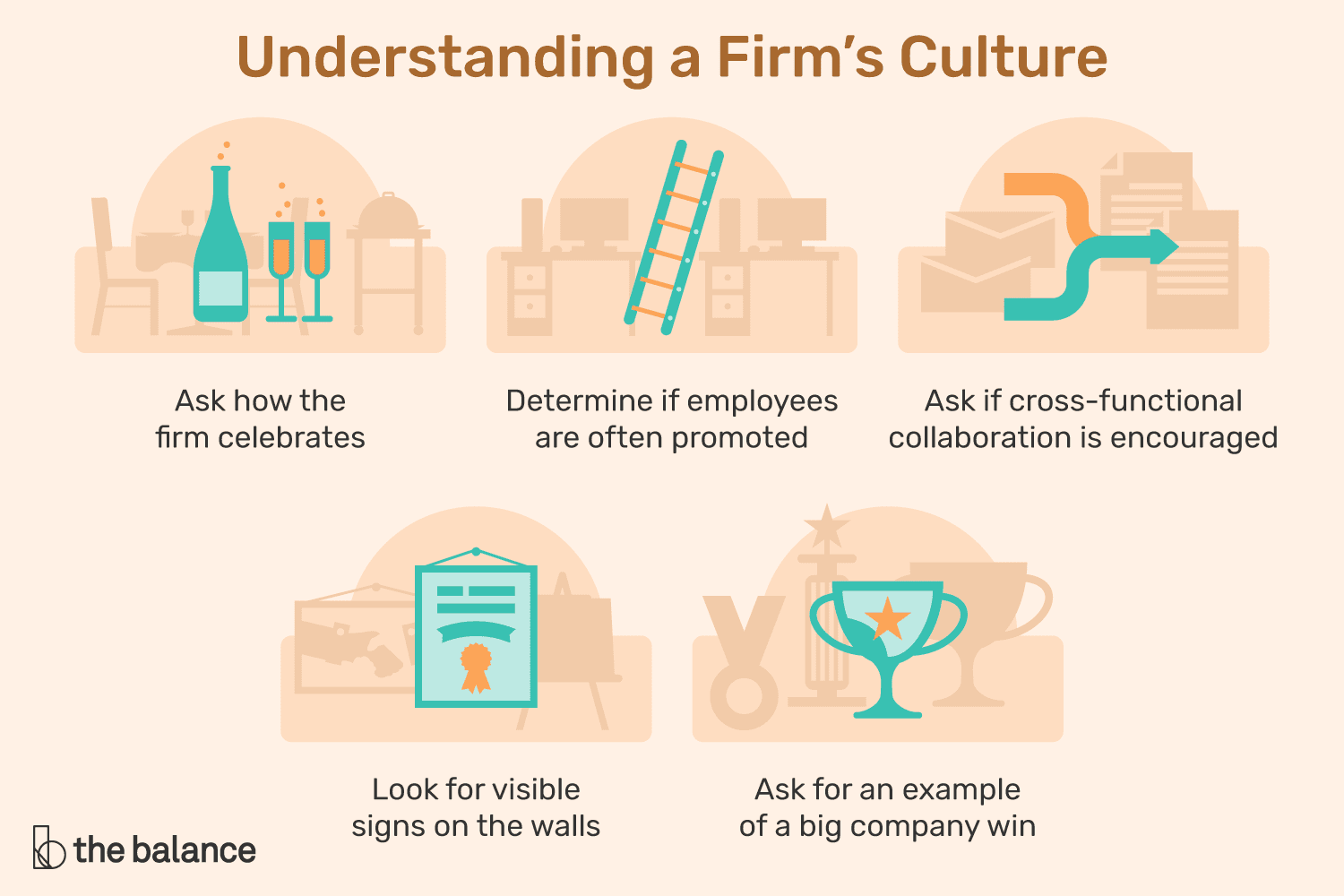Culture is defined as the values, practices, and beliefs shared by the members of a group. Company culture, therefore, is the shared values, practices and beliefs of the company's employees.
While you cannot see or touch a culture, it is present in the actions, behaviors, and approaches of the members of an organization. From hiring practices to how people work, make decisions, resolve differences of opinions, and navigate change, the culture defines the unwritten but very real rules of behavior.
This article offers guidance on learning to sense or understand a firm’s culture. For anyone seeking a job, striving to make a sale to a new client or any manager or individual contributor endeavoring to innovate inside an organization, a firm’s culture is a powerful force that must be accounted for in your endeavor. The oft-repeated phrase, “culture eats strategy for lunch,” offers the important cautionary advice to ignore culture at your peril.
Ask the Right Questions
Ask someone about their firm’s culture, and you are likely to hear a series of general statements, such as:
- We are an inclusive culture that encourages collaboration.
- It’s an environment where everyone’s opinion is respected.
- We are proud of our heritage and dedicated to our customers.
- We reward initiative in our organization.
While mildly informational, those statements might apply to any number of organizations, and they don’t give you a great deal of insight into the inner workings of the organization. A better approach is to ask about or listen to the stories that are widely shared and celebrated in the firm.
11 Types of Questions to Help You Understand a Firm’s Culture

1. Ask for an example of when the members of the organization came together to do something remarkable. Dig deeper and probe for examples of individuals or teams exhibiting heroic behaviors that enabled success with the big initiative. Listen carefully for group orientation or the singling out of one or more individual efforts.
2. Ask about examples of people who succeeded wildly within the boundaries of the organization. Strive to understand what it was they did that made them rising stars in the organization. Was it their initiative and innovative thinking? Was it their ability to rally support?
3. Look for visible signs of the culture on the walls of the firm’s facilities. Are the walls covered in stories or photos of customers and employees? Are the company’s core statements of mission, vision, and values present throughout the firm’s facilities? The absence of those artifacts says something as well.
4. How does the firm celebrate? What does it celebrate? How frequently does it celebrate? Are there quarterly town hall meetings? Does the firm get together when new sales records or big customer orders are achieved?
5. Is the concept of quality present in the culture? Do employees take pride in their work and the output of their firm? Are there formal quality initiatives in place, including Six Sigma or Lean?
6. Are the firm’s executives approachable? Are there regular opportunities to interact with top executives including the CEO? Some firms use “Lunch with an executive” initiatives to offer employees time to ask questions and learn more about the direction of the firm.
7. Is employee input sought for new initiatives including strategy?
8. Are the leadership roles filled with individuals who have been promoted from within? Does the firm tend to hire from the outside for senior roles?
9. How does the organization innovate? Ask for specific examples. Be certain to explore what happens when innovation initiatives fail.
10. How are big decisions made? What’s the process? Who’s involved? Do executives encourage decision-making at lower levels of the organization?
11. Is cross-functional collaboration encouraged? Again, ask for examples.
Individuals experienced at quickly establishing a sense of a firm’s culture use those questions and many others to understand a broad range of the attributes of an organization. They look to understand how work takes place and how employees are treated as well as how they deal with each other. From decision-making processes to the firm’s commitment to employee development and engagement, a careful questioner can learn a great deal about daily life in a firm through deft use of the questions above.